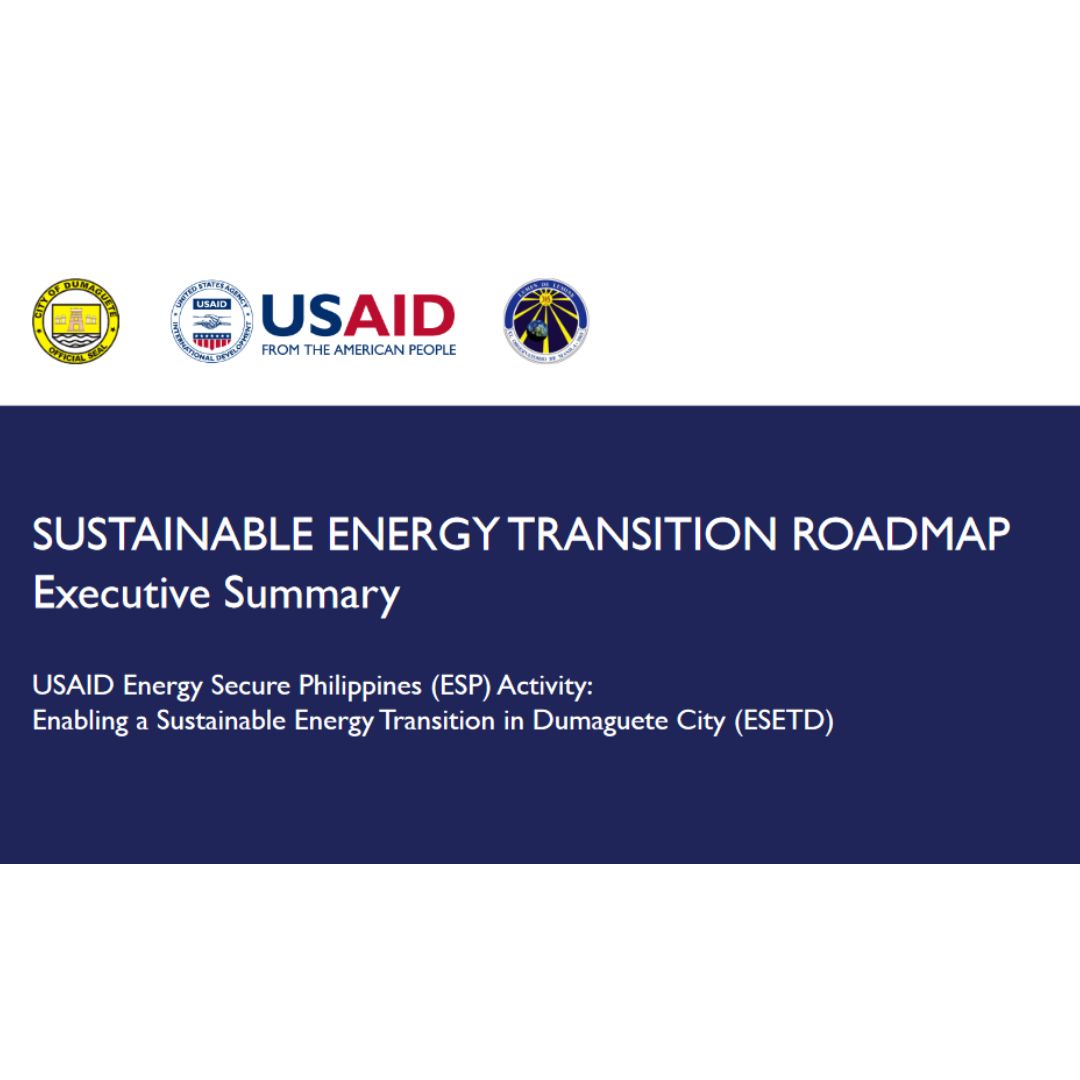This report was authored by John Altomonte, Ruby Descalzo, Hannah Guinto, Jaime Iñigo, and Tonichi Regalado (Manila Observatory).
Urban areas house more than half of the world’s population and are responsible for over 70% of energy-related CO 2 emissions worldwide. With cities expanding and their economies growing, these statistics are expected to increase by 2050. Cities and urban regions are thus becoming increasingly important in catalyzing large-scale sustainable transformations.
Increasing climate commitments worldwide have prompted transitions to low-carbon economies. In response to this, United States Agency for International Development – Energy Secure Philippines Activity is supporting Manila Observatory’s project entitled “Enabling a Sustainable Energy Transition in Dumaguete City”.
The project aims to enable the city of Dumaguete to become more sustainable and efficient in its energy usage. Through this project, the city government of Dumaguete will be able to better comply with Republic Act No. 11285 or EEC Act and its Implementing Rules and Regulations (IRR), particularly the Government Energy Management Program (GEMP) and the Inter-Agency Energy Efficiency and Conservation Committee (IAEECC) Resolutions.
The GEMP calls for the local government’s reduction in monthly consumption of electricity and petroleum products through electricity efficiency and conservation, and efficiency and conservation in the fuel usage of government vehicles, among other means.
Sustainable Energy Transition Roadmap
The crux of the project is the development of the Sustainable Energy Transition Roadmap. Aside from the EEC Act and its IRR, particularly the GEMP and the IAEECC Resolutions, the roadmap was designed utilizing the Science-Based Targets Initiative (SBTi) framework to ensure that pathways are aligned with the latest climate models and pathways. Through the
SBTi framework, the City of Dumaguete should aim to commit and reach an SBT of between 0-5% reduction of per capita emissions by 2030 and Net-Zero emissions by 2050.
This roadmap should serve as a starting point for Dumaguete City to further study these pathways and engage with its constituents for in-depth studies and consultations. From the analysis, four key sectors emerged: energy, buildings, transportation, and waste. Within these sectors, a series of suggested strategies have been outlined, seen through a science-based framework, and aligned with current climate scenarios and pathways. These strategies provide a pathway for Dumaguete City to reach Net-Zero emissions by 2050, while simultaneously increasing energy access, security, and supply, with co-benefits across other
sectors.
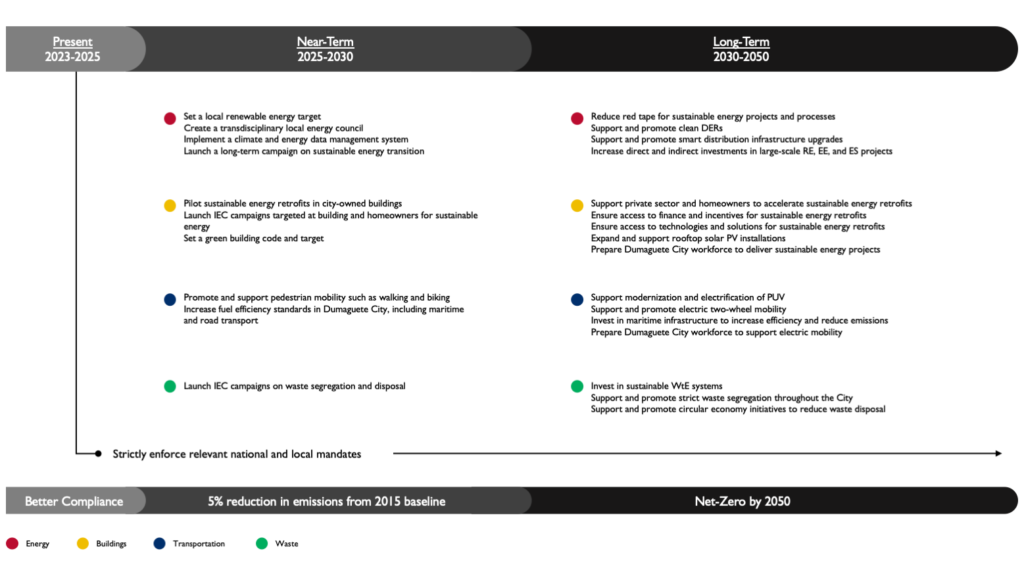
Dumaguete City Roadmap and Timeline
As an example, one of the strategies in the energy sector is the implementation of a climate and energy data management system. Dumaguete City can start developing a local digital repository
of climate and energy information to make it more accessible to the LGU, especially with complying with Republic Act No. 11285, particularly on the National Energy Efficiency and Conservation Database or NEECD. Furthermore, conducting a city-wide greenhouse gas (GHG)
inventory will help establish climate goals and targets.
Under transportation, Dumaguete City can support and promote electric two-wheel mobility. Dumaguete City has one of the highest numbers of motorcycles per capita in the country. This provides a strong opportunity for Dumaguete to transition to electric vehicles, particularly electric
two-wheelers. Fiscal incentives such as tax holidays may be granted to suppliers of electric vehicles in the city. Permitting processes can be streamlined in partnership with national bodies such as the Land Transportation Office (LTO) to facilitate adoption from end-users.
Dumaguete City Hall Compound Case Study
A case study was developed under the building sector, targeting Dumaguete’s City Hall Compound to highlight specific technology pathways for similar building typologies and to explore financing opportunities.
An investment-grade energy audit was conducted on the Dumaguete City Hall Compound which involved a mix of on-site energy assessments on the lighting, air-conditioning, electrical systems, motorized and other equipment units, and vehicle fuel consumption, as well as virtual modeling of energy solutions using IES VE, a modeling tool that employs digital twin technology.
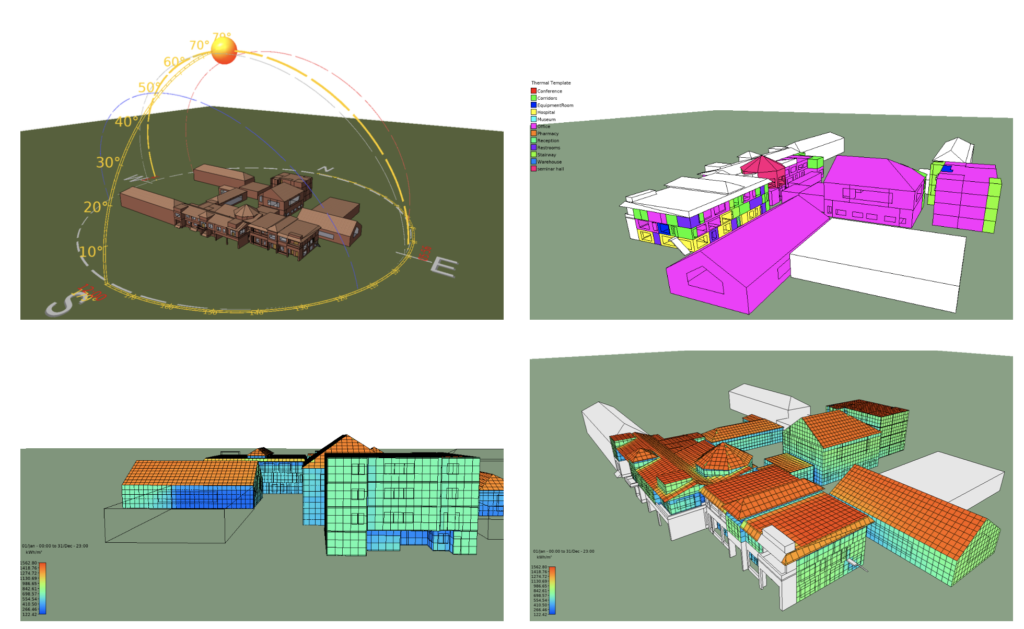
Digital twin of Dumaguete City Hall Compound
The city hall compound has a mixed use of fuel and electricity consumption for their vehicles, office equipment, lighting, and air-conditioning systems. Based on historical utility data, particularly from January 2017 to March 2022, the major contributor to the energy use of the city hall compound is the fuel consumption of vehicles. The second most energy-intensive contributor is the cooling or air-conditioning system. Using the virtual model of the city hall compound, a breakdown of energy consumption was simulated. The simulation does not include the fuel consumption of the vehicle fleet. Similar to historical utility data, the major contributor to energy consumption is cooling.
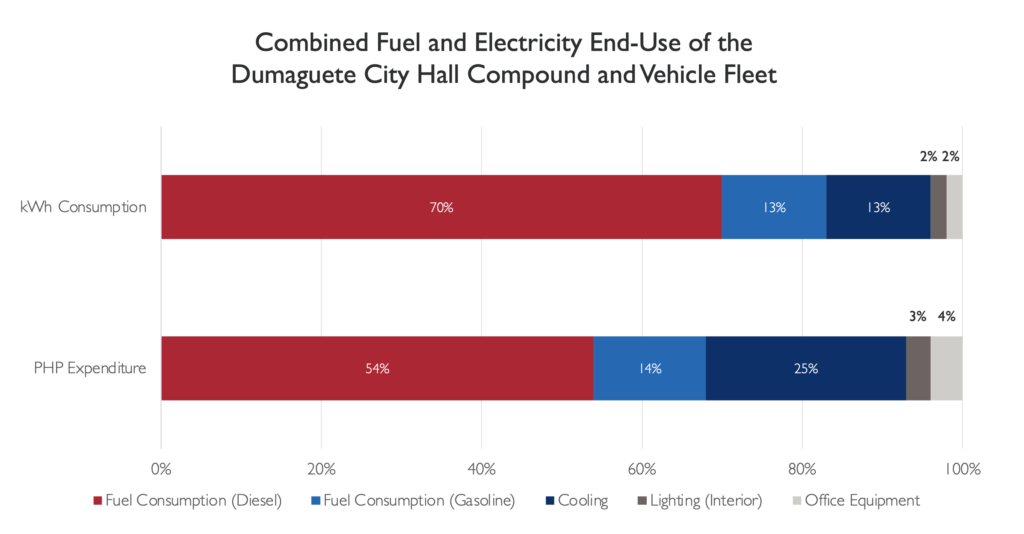
Breakdown of fuel and electricity consumption of the Dumaguete City Hall Compound and Vehicle Fleet based on historical utility data

Breakdown of energy consumption of the Dumaguete City Hall Compound based on IES VE simulation
The results indicate that through a mix of demand-side management and distributed renewable energy resources, the Dumaguete City Hall Compound can successfully reduce its GHG emissions and increase its energy efficiency, hence having significant financial savings. Some of the recommended solutions will be implemented through the project’s ESCO Model Pilot Project.
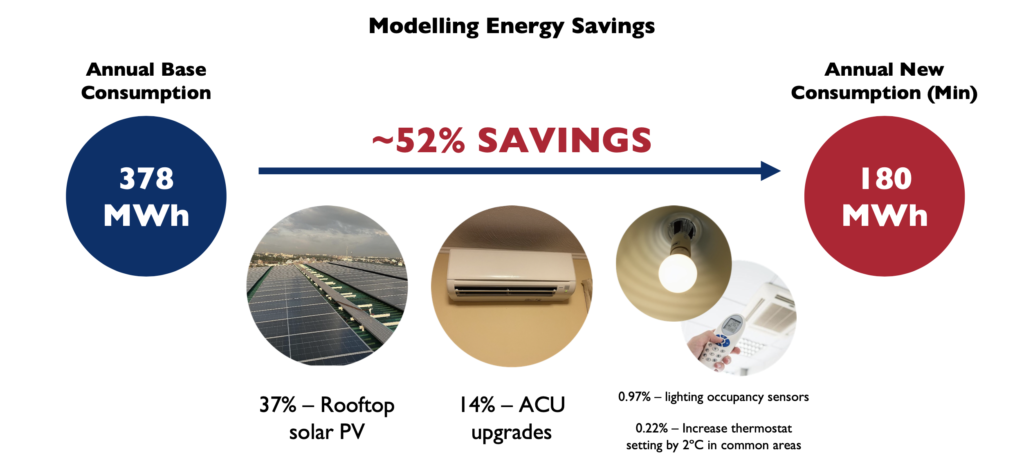
Modeled energy solutions and corresponding energy savings for Dumaguete City Hall Compound
You may view the executive summary of the Sustainable Energy Transition Roadmap of Dumaguete City here:
—
The project, ESETD, is under the Grants Under Contract Mechanism – ESCO EEC Innovations in Partnership with LGU of USAID Energy Secure Philippines. The grant is in support of the implementation of the EEC Act and its IRR, particularly the GEMP and the IAEECC Resolutions.
This web post and report are made possible by the generous support of the American people through the United States Agency for International Development. The contents are the responsibility of Manila Observatory and do not necessarily reflect the views of USAID or the United States Government.

